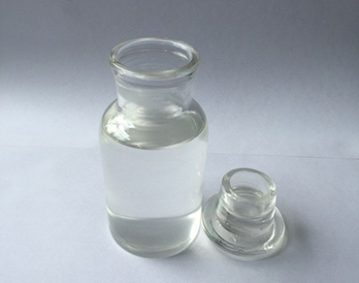Molecular formula: (CH3)6Si2O
Molecular weight: 162.42
1. Properties:
Colorless transparent liquid,non-poisonous, flammable, boiling point: 100°C,melting point: -68°C, density(25°C):0.75-0.77g/cm3, refractive index (25°C) :1.374-1.376, hexamethyl disiloxane can dissolve in toluene and so on organic solvents.
2. Specification:
|
Item
|
Target |
|
Appearance |
Colorless transparent liquid |
|
Content |
≥99.0% |
3. Use:
Hexamethyl Disiloxane is always uses as the end plate agent, cleaning agent, mainly used for organic chemical and pharmaceutical chemical production.
4. Packaging & Storage:
200L iron drum coating the plastic, 150kg/drum.
Prevent the rain drenches and light exposure, transport according to the dangerous goods requirement. The storage time is two years.
| 5. Frequently Asked Questions Q: Spill emergency treatment? A: Quickly evacuate the personnel in the leaked contaminated area to a safe area, and isolate them, strictly restricting access. Cut off the fire source. It is recommended that emergency personnel wear self-contained positive pressure breathing apparatus and fire protection clothing. Cut off the source of leakage as much as possible to prevent entering restricted spaces such as sewers and drying ditches. Small spills: Absorb with sandy vermiculite or other noncombustible material. Or incinerate on the spot if safety is guaranteed. Large amount of leakage: Construct dikes or dig pits for containment. Cover with foam to reduce vapor hazards. Use an explosion-proof pump to transfer to a tank truck or a special collector, recycle or transport to a waste disposal site for disposal. Q: Protective measures A: When the concentration in the air exceeds the standard, a self-priming filter gas mask (half mask) should be worn. When emergency rescue or evacuation, it is recommended to wear self-contained breathing apparatus. Wear chemical safety goggles. Wear anti-poison infiltration overalls. Wear rubber gloves. Smoking is strictly prohibited at the work site. After work, take a shower and change clothes. Pay attention to personal hygiene. Q: First-aid A: Skin contact: Take off contaminated clothing, wash skin thoroughly with soap and water. Eye contact: Lift the eyelids and rinse with running water or saline. Seek medical attention. Inhalation: Quickly leave the scene to fresh air. Keep airway open. If breathing is difficult, give oxygen. If not breathing, give artificial respiration immediately. Seek medical attention. Ingestion: Drink plenty of warm water, induce vomiting. Seek medical attention. |
